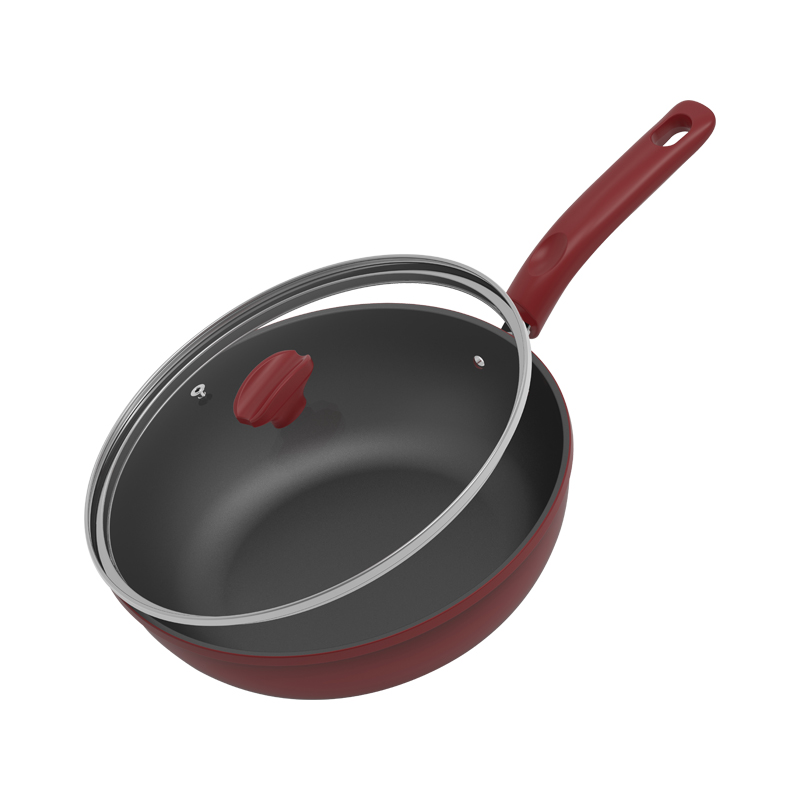When it comes to versatile kitchen tools, the wok pan is a favorite among many home cooks and professional chefs alike. Known for its unique shape and ability to handle a variety of cooking techniques, the wok is a staple in many kitchens. But with the advent of non-stick technology, the traditional wok has received a modern update. This raises an important question: Is a non-stick wok pan the best choice for your cooking needs?

Before delving into the pros and cons of non-stick woks, it's essential to understand what makes a wok unique. Traditionally, woks are made from carbon steel or cast iron. They have a round bottom, high sides, and a relatively small flat surface area. This design allows for even heat distribution and makes them perfect for stir-frying, deep-frying, steaming, and even braising.
1. Ease of Use and Cleaning:
One of the most significant benefits of a non-stick wok pan is its ease of use. Foods are less likely to stick to the surface, which means you can use less oil for cooking. This makes it an excellent choice for those looking to prepare healthier meals. Additionally, non-stick woks are much easier to clean than their traditional counterparts. A quick wash with soapy water is usually all that's needed to keep them in top shape.
2. Versatility:
Non-stick woks are incredibly versatile. They can be used to prepare a wide variety of dishes, from stir-fries and sautés to soups and sauces. The non-stick surface also makes them ideal for cooking delicate foods like eggs, fish, and tofu, which might otherwise stick to a traditional wok.
3. Time-Saving:
Because food doesn't stick, non-stick woks can save you time during cooking and cleaning. There's no need to scrub off burnt-on food or soak the pan overnight, making it a convenient option for busy households.
1. Durability:
One of the main concerns with non-stick cookware, including woks, is durability. Non-stick coatings can wear off over time, especially if the pan is subjected to high heat or scratched by metal utensils. Once the non-stick coating is damaged, the pan can lose its effectiveness and may even become unsafe to use.
See also:2. Heat Tolerance:
Traditional woks are designed to withstand very high temperatures, which is essential for authentic stir-frying. Non-stick woks, on the other hand, have a lower heat tolerance. Using them at high temperatures can damage the non-stick coating and release harmful chemicals. This limitation can affect the wok's performance and the flavors of your dishes.
3. Maintenance:
While non-stick pans are easy to clean, they require careful handling. You should avoid using metal utensils, abrasive sponges, or harsh cleaning agents to prevent scratching the surface. Additionally, many non-stick woks are not dishwasher safe, which might be an inconvenience for some users.
So, is a non-stick wok pan the best choice for your cooking needs? The answer depends on your cooking style, preferences, and priorities.
1. Occasional Use:
If you cook stir-fries and other wok-based dishes occasionally and prefer a hassle-free cooking and cleaning experience, a non-stick wok pan might be a good fit for you. Its ease of use and versatility make it a convenient option for everyday cooking.
2. Health-Conscious Cooking:
For those who are health-conscious and prefer using less oil, a non-stick wok can be beneficial. The non-stick surface allows you to cook with minimal oil, which can help reduce your overall fat intake.
3. Authentic Cooking:
However, if you are a purist who enjoys authentic Asian cooking and frequently uses high-heat techniques, you might find a traditional carbon steel or cast iron wok more suitable. These woks can withstand high temperatures and develop a natural non-stick patina over time with proper seasoning.
In conclusion, a non-stick wok pan offers several advantages, including ease of use, versatility, and convenient cleaning. However, it also has some limitations, such as lower heat tolerance and potential durability issues. Ultimately, the best choice depends on your individual cooking habits and preferences. By considering the pros and cons, you can make an informed decision and select the wok pan that best meets your needs and enhances your culinary adventures.
See also:Previous: What to Know About Non-Stick Preseasoned Cast Iron Pan Bulk Orders
Next: None
Related Articles
Comments
Please Join Us to post.
0